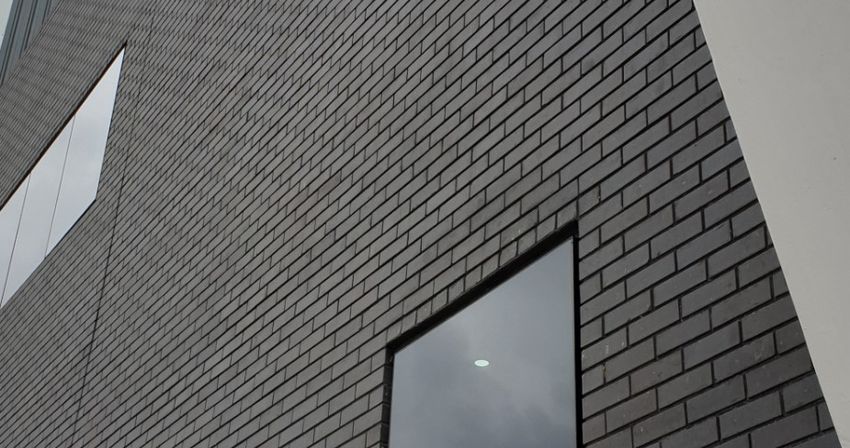Clay brick has been a reliable and cost-effective building material used in paving, casing, and other applications for almost 10,000 years. The longevity, versatility, and minimal required maintenance continue to make clay brick a popular building choice.
Clay pigment has opened the doors to endless design possibilities using the same dependable materials. Colonial style buildings feature the well-known red brick of the era, while popular contemporary structures today are leaning more towards rich black bricks.
Pigmenting the brick itself using carefully-formulated compounds provides a permanent aesthetic, as opposed to a high-maintenance painted brick that has to be regularly updated. K37 offers the dark brown to rich black colouration that modern building designers are looking for.
Page Contents
The Advantages of Using Clay Bricks

source:etbricks.co.uk
Other types of exterior siding for buildings usually either demand a lot of expensive and/or time-consuming maintenance, or they are expensive to install, either because they are labor-intensive or because the materials themselves are high-cost. Some of the alternatives to clay brick are prone to moisture and mould build-up that will require costly remedies not long after installation.
Clay bricks offer significant aesthetic value and require virtually no maintenance. This siding option is designed to last for the entire life of the home or commercial structure. It won’t mould and is also resistant to fire, which most other siding options are not.
Some homeowners and building designers shy away from clay brick, because it tends to have an outdated connotation. However, clay brick buildings have recently come back into style with innovative and modern designs in both residential and commercial markets.
Pigmented Clay Versus Painted Bricks

source:superiorclay.com
Pigmented clay holds colour permanently without fading. This is evidenced in centuries-old clay structures all over the world. The reason clay is able to hold its pigment is because the pigment is fired into the clay as opposed to being applied to the exterior of the brick like a paint or coating. Paint often fades after extended exposure to sunlight.
Painted brick requires much more maintenance than pigmented brick. Dirt is more visible on painted brick, so it requires regular washing to maintain its original aesthetic. Sun and weather can cause exterior paint to crack and chip away, leaving unsightly blemishes on the building. These cracks can also trap moisture that can lead to mildew and mould between the paint and brick surface. Generally, painted brick needs to be updated at least every five years.
Hot Masonry Trends of 2019

source:superiorclay.com
Some of the new brick trends appearing in modern building design include things like depth variation. This is when the surface of the brick pattern is staggered to create dimensions that play with the light and shadow. Many modern homes are utilizing different cuts of the brick to create beautiful architectural designs.
Black clay is a quickly emerging trend in several countries. Traditionally, brick has been kept the natural colour of the clay, which has a range of several muted earth tones. One of the biggest trends in the last few centuries was the bright red brick of colonial design. Contemporary homes and structures are incorporating rich, dark clay pigment and combining the coloured brick with design elements like contrasting grout and shadow lines to create stunning aesthetics.
K37 Black Brick Stain

source:superiorclay.com
As Mineral Milling educates, the K37 Black Brick Stain is a custom formula made from various mineral compounds. The colour ranges from a dark cedar brown to a rich black, and can be used to create endless architectural designs. The range of colours available from this single formula allows manufacturers of clay bricks to provide building designers with a wide selection without needing to stock additional products.
K37 has a 98% below 45 micron consistency, which improves colour saturation by improving surface area coverage. Depending on the iron content of the clay being pigmented, the addition of 6% to 12% K37 is able to reach full saturation. It can be used in all terra cotta brown red clays. A secondary formulation known as K37B can be used in unstable clays that require a lower firing temperature, such as those found in Spain.
When choosing a look for a new structure or an update for a home, clay brick should not be overlooked. Its longevity makes it naturally cost-effective with virtually no required maintenance. Trends in building colouration are becoming bolder and more adventurous, featuring dark brick and high-contrast colour schemes. K37 Black Brick Stain provides a range of colours that can be used to create beautifully modern and contemporary building designs that last.





